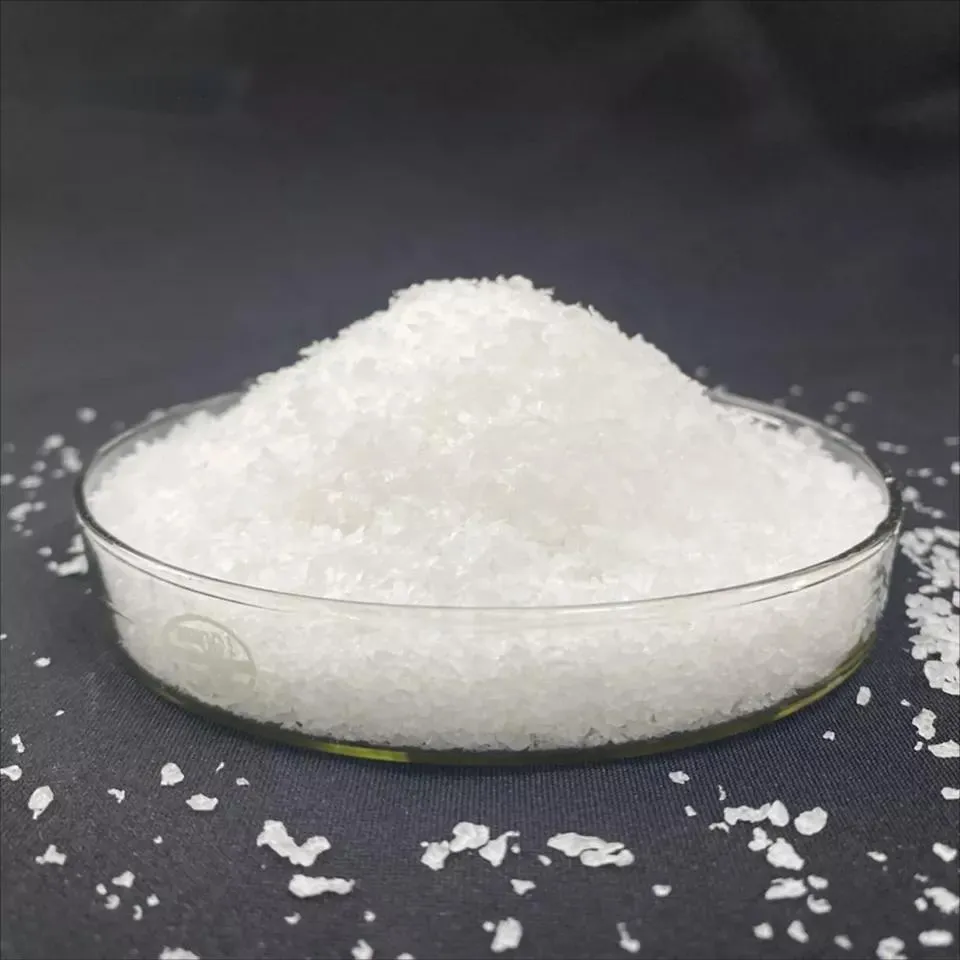
Polyvinyl alcohol is listed as an ingredient in many of the laundry detergent sheets, pods, and dishwasher pods currently on the market, but you may have never heard of it before today.
I see it mentioned frequently—and hotly debated—online, and among the cleaning product industry, many environmental communities, and some scientists. The issue revolves around whether the ingredient is plastic or not, and further, whether its existence in products that are going to travel down the drain into our water waste system is a problem.
With so much talk of plastic pollution—it’s in our food and oceans and makes up a large portion of the garbage in our landfills—it’s easy to understand why some are worried.
According to the most recent data from the Organisation for Economic Co-operation and Development, only 9 percent of plastic was recycled globally in 2019.
What Is PVA?
Polyvinyl alcohol or PVA (sometimes also called PVOH or PVAl) is a class of water-soluble synthetic (manufactured) polymers primarily derived from fossil fuels. Some other synthetic polymers you may be familiar with include polyester, polyethylene, and Teflon.
The EPA says PVA is a complex group of chemicals. A spokesperson from the agency said: “The range of chemicals described as PVA include a variety of polymeric structures with varying toxicity, biodegradability, and other parameters.” PVA is used in the pharmaceutical industry as the coating on tablets and is an ingredient in laundry detergent sheets and pods and dishwasher detergent pods.
According to laundry sheets maker Kind Laundry, PVA holds the other ingredients in the sheets together until they come into contact with water. Once it hits water, the ingredient (and all other ingredients in these detergent pods and sheets) should dissolve, but PVA’s biodegradability is debated by some scientists, the cleaning product industry, and many environmental communities.
It’s worth noting that the EPA lists the ingredient in its Safer Chemical Ingredients List, it isn’t on Canada’s list of toxic substances, and the European Union hasn’t flagged it as a hazardous ingredient.
High Purity 99% pva industrial grade polymer powder polyvinyl alcohol pva good price pva 1788 2488 powder
Why It Matters If PVA Is a Plastic—or Not
Based on my conversations with experts, concerns remain about PVA’s biodegradability and its potential to release tiny plastic particles (microplastics) every time someone does laundry or runs a load of dishes in a dishwasher using a pod. This isn’t just an environmental concern but also a health concern because microplastics have been found to make their way into our drinking water, and a small 2022 study found microplastics in 75 percent of 34 breast milk samples studied.
In March 2024, a study was published in The New England Journal of Medicine that found microplastics in the arterial plaque of 150 of the 304 patients with asymptomatic carotid artery disease enrolled in the study. Those with artery plaque in which microplastics and nanoparticles were detected had a higher risk of myocardial infarction, stroke, or death than those with no detectable microplastics in their plaque.
This is just one study showing the possible health implications of microplastics, but with more research, we could learn so much more about where these tiny bits of plastic end up.
Studies on PVA
While PVA is said to readily dissolve in water, a 2021 study published in the International Journal of Environmental Research and Public Health estimated that only a small fraction of the PVA that is treated at wastewater plants actually ends up being biodegraded “due to the specificity of conditions required to facilitate complete degradation.”
CR senior scientist Michael Hansen, PhD, says that solubility and biodegradability are different, with biodegradability referring to “how readily a substance is broken down by microorganisms into organic compounds.” The study was funded in part by Blueland—the same brand that is supporting the bill introduced in NYC and that sells its own plastic-free detergent packs. The American Cleaning Institute, a trade group, disputes this study’s findings.
CR chemist Eric Boring confirms that PVA is biodegradable—under the right conditions. “Specific enzymes and microorganisms that can metabolize PVA need to be present. These enzymes/microorganisms may or may not be present in the environment,” Boring says. The EPA was unable to comment on the presence of these microorganisms because wastewater treatment plant conditions vary from one location to another.
Blueland, the Plastic Pollution Coalition, Made Safe, and other environmental groups petitioned the EPA in 2023 to change PVA’s status on the Safer Chemical Ingredients List and to require manufacturers of the ingredient to conduct safety testing via third-party testing facilities. They also called for more research to be done on the topic to better understand the health and environmental impact of the polymer.
The EPA denied this petition, citing a lack of information from the petitioners proving that more testing was needed. They also cited three studies and an opinion from the European Food Safety Authority in their response to the petition that I’ve summarized below.
- In its response to the environmental groups’ petition, the EPA said that one 2003 study from the Food and Chemical Toxicology journal concluded that orally administered PVA had low “oral toxicity” when used “as an indirect food additive and coating agent” for pharmaceutical and dietary supplement products. Hansen says that since the publication of this study over 20 years ago, more concerning information about the toxicity of microplastics and nanoplastics has arisen in the last five to 10 years.
- A second cited study from the Polymers journal found, according to the EPA, that the PVA polymers it tested posed no toxicity risks to the model marine organism used in the study. However, the study also found that the biodegradation of the material in seawater was limited, meaning it did not completely biodegrade under the study’s conditions.
- Finally, as support for the safety of PVA in consumer products, both the Cosmetic Ingredient Review Expert Panel and the European Food Safety Authority (both cited by the EPA in their ruling), have released reports concluding, according to the EPA, that the ingredient is not a safety concern to use in cosmetic formulations and for ingestion as a coating agent for pills, though they did not address PVA’s fate after it reaches our waste treatment system.
What Experts Say About PVA
According to the EPA, the chemicals classified as PVA that are included in the Safer Chemical Ingredients List have met certain criteria that all chemicals considered for the program must meet. A representative from the EPA’s Office of Media Relations told us, “The Safer Choice program allows the ingredient PVA to be used in products only when data is available for that specific type of PVA and that data demonstrates the ingredient meets Safer Choice Criteria, including the criteria in the Standard for toxicity and biodegradation. The Safer Choice program requires full chemical and ingredient disclosure and confirms that information during annual audits.”
Polyvinyl alcohol remains on the EPA’s Safer Chemical Ingredients List with a green circle designation (the highest grade on the EPA’s list indicating that it has been verified to be of low concern) as of the writing of this article.
Paul Scott, director of product sustainability at CR, stands by the EPA’s position and notes that scientific literature is constantly evolving with emerging regulatory landscapes, particularly in Europe, enabling more data on the environmental fate of materials.
Because of the specific conditions required to break down PVA at wastewater treatment plants, Boring said that he hopes the EPA and other environmental organizations conduct further studies to find out more about the fate of PVA after it reaches treatment plants.
Hansen spoke with me at length about PVA and microplastics in general. In his opinion, with the scientific tools available at the time that the EPA made its decision to include PVA on its Safer Chemical Ingredients list (the PVA used in laundry and dishwasher detergents was added to the list in January 2016), it makes sense that the agency would consider it of low concern.
But with advancements in technology that can detect far smaller-sized microplastics and the increased use of these chemicals in household goods, he thinks it’s about time more research is done to find out more about PVA and other synthetic polymers commonly derived from fossil fuels. “I totally agree with this bill that was introduced in New York City,” Hansen said. “This bill could be the first step in a necessary conversation about the extent to which we are introducing potential microplastic pollutants into our environment.”
The Bottom Line
Even with all of the data to support polyvinyl alcohol’s use in household products, the city I live and work in is proposing a law looking to ban the ingredient, and CR’s own experts support further research. The numerous studies with contradicting findings don’t offer total clarity either.
However, the fact that the European Union (historically stricter than the regulatory agencies in the U.S. on ingredient safety) said that polyvinyl alcohol when used in food supplements is not a safety concern makes me feel better about the ingredient’s inclusion in the products I use, though Hansen says that PVA use in food supplements is different than its use in detergent packs because the total amount of PVA use is much higher. “It is in part due to the popularity of those products that the use of PVA has skyrocketed in recent years. That’s why critics are concerned about the massive amounts of PVA going into the environment and are concerned about potential impacts on health.”
For me personally, I won’t be making the switch from liquid laundry detergent to detergent sheets just yet. More research needs to be done to determine whether laundry detergent sheets are the solution to the plastic pollution problem in our laundry routines, especially considering their poor performance in our laundry detergent testing. “We found in our testing of laundry detergent sheets that they were less effective at removing stains than our bottom-rated liquid and pod/pack detergents," says CR’s laundry expert Richard Handel. "Currently, there are much better detergent choices than this new type.”





